#Kubra Khademi
Explore tagged Tumblr posts
Text


Kubra Khademi, “Bagage de Route #1 & #2” (2020)
9 notes
·
View notes
Photo


Kubra Khademi (Afghan, *1989). Bagage de route (2021).
161 notes
·
View notes
Text
Week 1: Praxis - Creative Practice vs Critical Thinking
Both creative practice and critical thinking are similar in a way that breaks the traditional way of solving problems. Both these practices challenge conventional thinking in order to ideate solutions that are practical and ingenuine. When hand in hand with each other, I believe these skills make for the ultimate solution. Similarly like the concept of form and function - Creative practice brings innovative ideas whereas critical thinking ensures practicality

During our class activity today, we were required to write a one-page creative text regarding a social issue we feel strongly about. We got into groups and discussed how creative and/or critical our stories are. In this activity, we all had different takes on how to convey our messages. The creativity derived from writing techniques - imagery, characterization, symbolism, etc. Whereas the critical elements can be found through historical contexts and moral reflections. I believe that all the stories I read were able to meet these requirements - the personal take on social issues made them much more genuine to read and so, successfully conveying the message each writer intended.
We then talked about how critical thinking can be creative. Since critical thinking is the practice of deep analysis rather than a straightforward approach, there are often contradictions that allow creative solutions to be made - Out-of-the box methods to bring practicality and innovation together.

Exploring this conclusion further, I found the company Pavegen to be quite fitting. Pavegen’s innovation uses something so mundane, footsteps, to create energy with the purpose of sustainability. Their product, interactive floor tiles, have been added in various urban spaces like the Abu Dhabi Airport.
Next, we talked about how creativity can be critical. A lot of creative ideas challenge social and/or cultural norms, thus, critiquing societal issues. These forms of expressions often are up to interpretation and more purposeful than they seem

An example of this is Kubra Khademi, a performance artist from afghanistan. Her piece ‘Armour’ used creativity to defy cultural norms and suggest that women are more than their body. For her viewers however, this was more radical and subversive.
Khademi’s work now still follows the same themes and is expressed through her creativity. This ties in with our theme of Creative practice with critical thinking - using artistic expression for a cause.
WORD COUNT: 346
CITATIONS:
"Rajouri District." District Administration Rajouri, Government of Jammu and Kashmir, rajouri.nic.in/. Accessed 24 Sept. 2024.
Bose, Sumantra. Kashmir: Roots of Conflict, Paths to Peace. Harvard University Press, 2003.
Hussain, Altaf. "Kashmir's Troubled Past and Its Impact on Hindu-Muslim Relations." BBC News, 10 Mar. 2003, news.bbc.co.uk/2/hi/south_asia/2744229.stm. Accessed 24 Sept. 2024.
Lamb, Alastair. Kashmir: A Disputed Legacy, 1846-1990. Roxford Books, 1991.
Ganguly, Sumit. The Crisis in Kashmir: Portents of War, Hopes of Peace. Cambridge University Press, 1997.
Haynes, Suyin. "This Afghan Artist Was Forced to Flee after Protesting Harassment." Time, 1 May 2018, time.com/5255770/khubra-khademi-afghanistan-armor/. Accessed 24 Sept. 2024.
McGivern, Hannah. "Khubra Khademi on Fleeing Afghanistan and Living in Exile in Paris." The Art Newspaper, 5 July 2017, www.theartnewspaper.com/2017/07/05/khubra-khademi-on-fleeing-afghanistan-and-living-in-exile-in-paris. Accessed 24 Sept. 2024.
Houghton, Mick. "Feminism and Resistance: Khubra Khademi’s Armor Performance in Kabul." The Guardian, 10 Mar. 2015, www.theguardian.com/artanddesign/2015/mar/10/feminist-art-khubra-khademi-armor-kabul. Accessed 24 Sept. 2024.
Pavegen. Pavegen: People and Planet Powered by Footsteps, 2024, www.pavegen.com/. Accessed 15 Nov. 2024.
1 note
·
View note
Text
0 notes
Text
islamismo. L'emancipazione in un disegno. Così KUBRA KHADEMI sfida il patriarcato, di Francesca Ferri, in Domani 10 agosto 2023
letto in ediziona cartacea cerca in https://www.editorialedomani.it/idee/cultura/lemancipazione-in-un-disegno-cosi-khademi-sfida-il-patriarcato-pbkfvmjf Kubra Khademi è nata nell’Afghanistan centrale, un luogo dove l’immaginazione è confiscata, dove il futuro di una donna è già scritto. Ma mentre da piccola doveva nascondere i suoi disegni, ora espone in tutto il mondo, sfidando il patriarcato…

View On WordPress
0 notes
Photo

Kubra Khademi - Red Carpet 2020
« Nous étions trop, nous n’étions pas précieuses, nous étions femmes » Kubra Khademi, artiste Afghane.
12 notes
·
View notes
Video
youtube
"Radical Self" - Sky Mottet, Becky Nalevanko's Dance and Tumbling Studio, teen contemporary solo, 1st overall, Nuvo Chicago, March 2018 ★ Choreography by Victor Smalley ♪ The Radical Self ~ AGF, Antye Greie ft. Kubra Khademi
[ The voice-over is about this performance piece by a brave Afghan woman. ]
#Sky Mottet#Becky Nalevanko's Dance and Tumbling Studio#AGF#Antye Greie#Kubra Khademi#The Radical Self#Victor Smalley
15 notes
·
View notes
Photo




Kubra Khademi, b. 1989 Armor Afghanistan (2015) Live performance, 8 min [Source], [Source]
The Daily Mail says:
Afghan performance artist Kubra Khademi was just 4 years old the first time she was molested by a stranger on the street, and recalls thinking one thing: "I wish my underwear was made of iron."
So more than 20 years later she donned a suit of armor with large breasts and buttocks and wore it on the streets of Kabul to protest Afghanistan's endemic harassment.
The eight-minute performance was not well received: She is now in hiding and afraid for her life. But after a lifetime of being pinched and prodded on the streets — and being told to keep quiet about it — the 27 year old is determined to break her deeply conservative society's silence on sexual harassment.
33 notes
·
View notes
Text
Step by Step 5
An interdisciplinary seminar with a focus on walking, hosted by Clare Qualman at the University of East London

Monday 24th April 2017, 6 to 8pm. Book here
Step by Step 5 is co-hosted by UEL’s Centre for Performing Arts Research (CPAD), the Centre for Research on Migration, Refugees and Belonging (CMRB), and the Walking Artists Network, this seminar will focus on themes of migration, cities, public space and performance, bringing together the Afghan artist Kubra Khademi, with writer and journalist Anna Minton, and writer, artist and producer Mary Paterson. The seminar builds on themes that have emerged from the WALKING WOMEN project, started in 2016 by Clare Qualmann and Amy Sharrocks.
Kubra Khademi is an Afghan artist and feminist. She studied at Kabul University and Beaconhouse National University, Pakistan where she began to create public performance. Returning to Kabul her work actively responded to a society dominated by extreme patriarchal politics. After performing her piece Armor in 2015, Khademi was forced to flee Afghanistan. She currently lives and works in Paris, France. In 2016 she was awarded an MFA Scholarship at Pantheon Sorbonne University and was made a Chevalier de l’Ordre des Arts et Lettres by the Ministry of French Culture.
Anna Minton is a writer, journalist and Reader in Architecture. She is programme leader of UEL's MRes Architecture: Reading the Neoliberal City. Her research interests include cities, democracy and public space. As well as contributing regularly to The Guardian, Minton’s publications include Ground Control: Fear and Happiness in the 21st Century City, (Penguin 2009, 2012) and the forthcoming Big Capital: Who’s London For?(Penguin, 2017).
Mary Paterson is a writer, artist and producer working between critical writing, poetry and live art. She is currently Bristol Writer in Residence for the Art Writer's Programme, hosted by the Art Writers Group, Spike Island and Arnolfini, funded by Arts Council England. Here, she is continuing her research into the politics of movement and the etiquettes of public space, through a series of interviews, critical texts and public walking workshops.
1 note
·
View note
Text
A CAT scan of the Contemporary Subconscious
for The Attic Magazine

Potentially Everything
In recent years it seems that festivals have become the dominant musical events. While it would be rather pointless to add to the debate about the extraordinary surge in festivals, traveling to more and more events and seeing the similarities in tone and programming, one cannot help but wonder – what makes a festival special?
Rewire is a discreet but dense affair in the experimental/dance music hybrid in The Hague, not a very obvious choice when it comes to the Netherlands. The picture-perfect surroundings and walking-friendly size of the city made for a very pleasant festival destination.
While Rewire could be compared to the Unsound/CTM family, it is not an overtly music and contemporary arts festival, nor is part of the SHAPE network, carving a more distinct path. Despite not having an overall theme, subjects such as activism, feminism, nostalgia and emotion in music ran like a red thread through the programming. Adam Harper’s excellent essay The Music of the Body, published in the festival booklet was a very helpful starting point in this respect.
Rewire is certainly a place for discovery: featuring 45 min live sets and having the venues at about 5-10 minutes walking distance from one another with the schedule slightly overlapping, one could potentially experience a significant dose of every act.
This system worked pretty well between the Paard and Prins 27 venues across the street from each other, but going any further one felt the need for a bike, as AGF confessed to literally “running like a child” after her talk, in a failed attempt to catch Pharmakon’s set.
Regardless of those glitches, the three days were perhaps my most action-packed musical vacation.

Tulip Fields, Feminism and Improv
After spending a couple of days in Amsterdam, I took a rideshare to Den Haag, rushing through the flat fields populated with the occasional cattle and monochrome strips of tulips. Armed with my press bracelet, the city was starting to morph into the magical festival bubble as I ran into my friend Max and the rest of the Horse Lords on my way to the Korzo Theater.
Missing the Forest Swords talk right on the nose, I spent some time in the festival-dedicated-area of the lobby and putting together my plan for the evening.
As the doors finally opened, I was really happy to see my long lost festival sister Amy, a happy coincidence creating a shift in my usual festival narratives, resulting in a more gynocentric experience. Together with her colleague Holly, our new female-journalist-power-group was born. It was the perfect setting for exchanging impressions and making those though choices between conflicting acts.
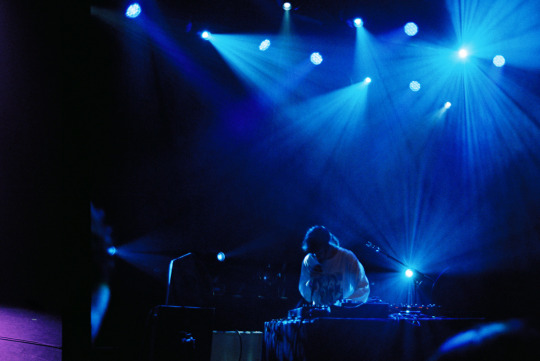
Our journey began in Paard II, the smaller room of the venue, with a dose of saccharine syncopated beats by Jessy Lanza. I fell in love with her childlike, pitch-perfect crooning when first hearing The Galleria, in collaboration with NYC producer Morgan Geist. Her solo work, while less club friendly, is infused by the same pop sensitivity coupled with heart-on-sleeve emotion and offbeat naïveté. On stage she was a pure sugar rush, enveloping the entire space in her sweetness. Struggling to get closer for some shots, I had a joyous run-in with activist and female:pressure ambassador AGF, adding another piece to the sisterly puzzle.
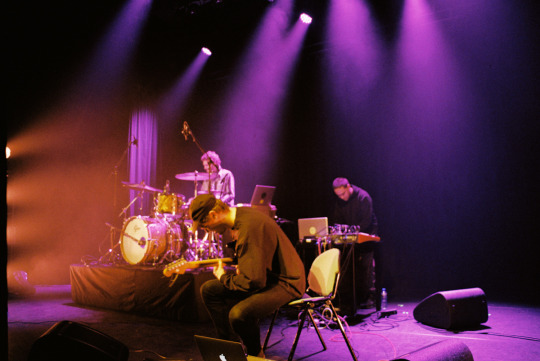
Across the street in the dark, cozy stage of Prins 27, the New York trio Zs had just begun their set. A fluttering guitar intro was filling out the space, just as a slowed down tribal drumming started, juxtaposed with doomy saxophone howls and computer glitches by a special first-time guest performer, evolving into a delirious cacophony, seeping in and out of chaos.
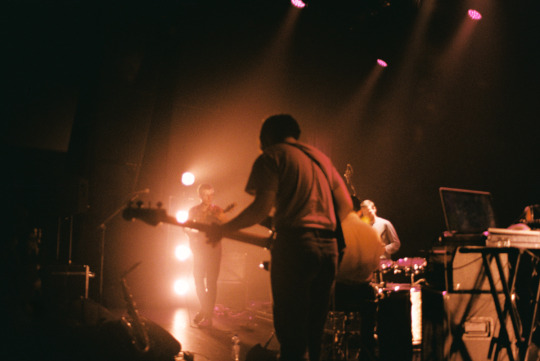
Coming back later to the venue for Horse Lords, I arrived in the middle of an all-enveloping, hypnotic, sinuous saxophone solo, emphasized by Max Eilbacher’s signature abstract electronics. Their second piece started off with quiet guitar finger picking, as the rest of the band was slowly joining in, soon turning into a full-on percussive explosion, with saxophonist Andrew Bernstein joining Sam Haberman on drums and Max picking up the bass. It was a nice change of pace to see them play with the dynamic and explore more meditative moments framing their more rhythmical passages.

Trances
Back at the Paard, the main hall was packed, resonating with the shoegaze chords of the Slowdive reunion, which transported me straight back to high school.
At the smaller stage, the crowd was anxiously trying to find a spot for the Forest Swords performance. The place was filled to the brim, with a line forming at the entrance. Luckily I had found a comfortable refuge by the staircase, with a great view of the performers in front of a large projection of a black and white photograph featuring a group of horsemen, bare-chested, riding into the sea. His majestic, dark yet danceable elegies and full-bodied beats were making the space almost claustrophobic, rending the room upstairs into a giant resonating box, with overwhelming bass, climaxing with the familiar refrain of Dagger Paths’ Miarches. After first seeing him in Paris back in 2014 and more recently on the big stage at Unsound, it was refreshing to experience this more intimate, focused performance.
Popping back into Paard I, Blanck Mass, the solo project of Fuck Buttons’ founder Benjamin Jonathan Powers, took us on a journey to the glitchier side of trance with stroboscopic, organic visuals bordering the grotesque. It felt like being transported into a scene from Enter the Void.
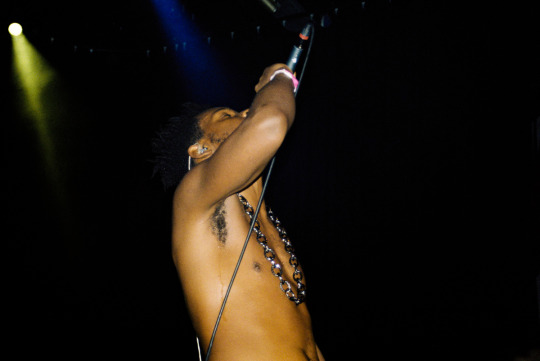
This brief excursion was the perfect palate cleanser before GAIKA, although one might argue that nothing could really prepare you for his confrontational, full-on performance. Once he was on stage, the real party started – there were young girls in the front row weaving their hands in pseudo-oriental fashion, bodies swaying to the infectious beats. Behind the contorted figure of the performer, armed with the microphone, a large, Viking-looking metalhead was assuring the backing vocals, together with a DJ. It was a powerful, raw display of emotion coupled with an uncontrollable desire for dancing.

Norwegian duo N.M.O provided the healthy dose of analogue techno workout from the middle of the crowd, crystallizing in the collective catharsis we’ve all been waiting for, complete with sweaty drumming and a Jérôme Bel-esque performance moment when the guy in the Sudden Infant shirt doing 20 air pushups as the sample instructed.
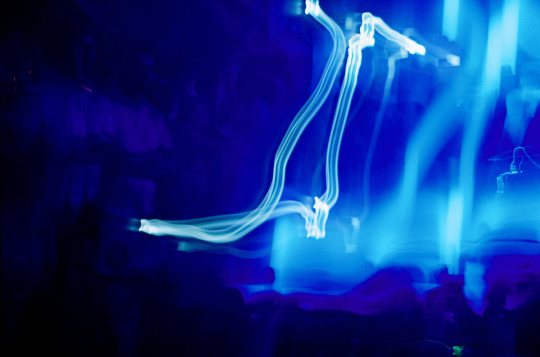
Arca’s DJ set, coupled with Jesse Kanda’s visuals, was one of the most fascinating instances of crowd work I have ever witnessed. He had the roomful of people in the immense space of Paard II fully in his power, toying with our emotions from pumping techno to Destiny’s Child and even a traditional Urdu song, while baby owls, fish guts and African puppies were staring back from the screen. As if he wanted to make us dance, then make us feel guilty for dancing, in a highly nuanced realm between abandon and discomfort. I would have loved to experience the more performative, outlandish costumes side Arca is famed for, but the overall effect was still utterly poignant.

Disturbance
Saturday started with a morning visit to the AGF/Kubra Khademi rehearsal; the meeting between the two artists happened a couple of years back online, after Antye read the story about the Afghan artist’s brave performance against female harassment in Kabul, which lead to her arrest and current exile. After meeting several times, over the years, the two artists developed ZANSUSPENSION, premiered at the festival.
The show was a highly moving interdisciplinary moment, featuring Kubra descending into the space in a body bag over AGF’s organic textures. Displaying strength and vulnerability, their collaboration seemed like the most natural thing in the world for both performers.
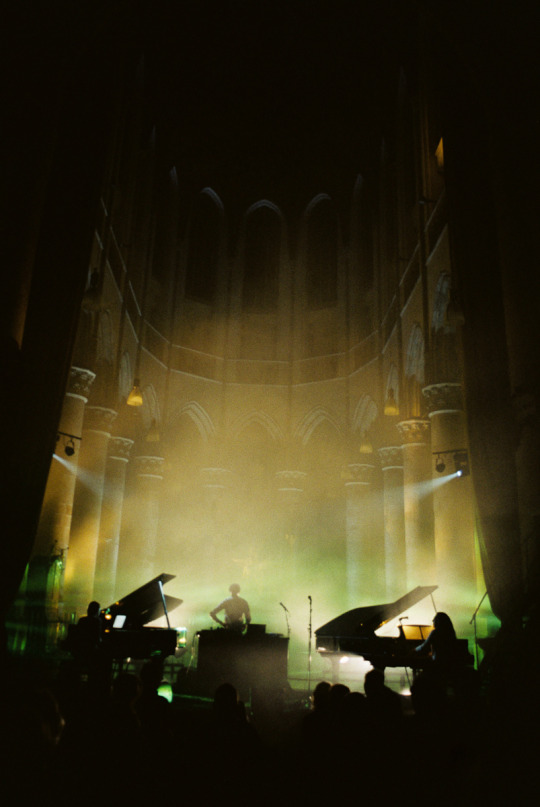
Skipping on the ensuing talk, I rushed to the Grote Kerk for Jayce Clayton aka dj/Rupture’s tribute to the late African American gay composer Julius Eastman. His minimalist piano pieces were resonating in the gorgeous space, the acoustics emphasizing the otherworldly nature of the score. It was a sublime, transportive moment. Jayce framed his tribute with a tongue-in-cheek self referential piece, a humorous and clever commentary on the role of the performer.
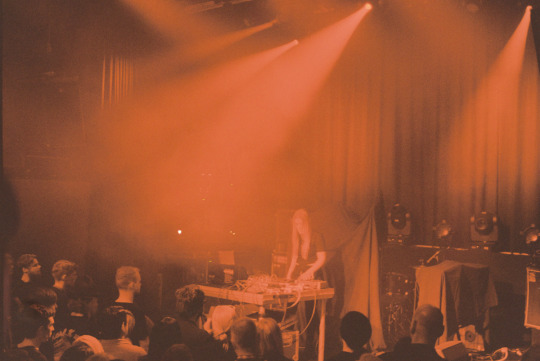
Sonic Sisterhood
Rushing back to Paard II, I was faced with a thick crowd blocking the entrance; I could hear Pharmakon’s world-shattering drones from the hallway. Entering the womb-like space covered in red light, I could finally hear her thanatic, visceral screams. Hers was a possessed, consuming performance, oscillating between electronics and her rolling on the floor with punk audacity, before surrendering to pure anarchy and descending into the confused but enthusiastic crowd. It was a good choice of programming to have Wolf Eyes play right before and set the tone.
Later on, I spotted her at Prins 27, looking very un-demonic with her blonde tresses and biker jacket. We were all waiting for Moor Mother’s set. Antye and Kubra joined us in the front row.

Behind a computer screen and two microphones, Moor Mother started off with a series of texts about black identity on an ambient background, with interjects on a toy theremin. About ten minutes in, things went 180 and I witnessed the most punk rock performance of the festival – she put on a fat grime beat, grabbed a microphone and started pacing and staring down the crowd, while rapping about protests and slavery, before jumping into the crowd for “Deadbeat Protester”.
It was an intense marriage of politics and club culture that would have made DJ Sprinkles proud.
Although the much anticipated club night was about to start in Paard II, it was SØS Gunver Ryberg’s dark blend of masterful analogue techno back at Prins 27 that helped ease out the crowd from noise into club mode.
Booking a series of headlining DJs in the small space of Paard II after all the other performances ended was a miscalculation on the part of the organizers, especially when selling extra tickets especially for the night, leading in general chaos and a frustrating amount of queuing.

Once again, it was the ladies who ruled this portion of the night as well, Aurora Halal’s live maze of kick drums and meandering beats leading the crowd into a beautifully orchestrated collective delirium.
The Swedes of SHXCXHCXSH went full darkness, but Helena Hauff’s gorgeous mix of Chicago, Detroit anthems and a hint of acid offered the perfect finale for this emotionally charged evening.
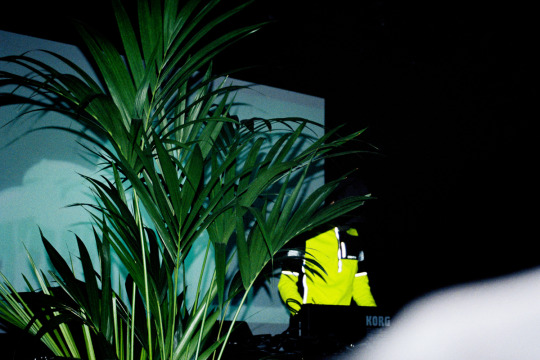
Although Croatian Armor, dressed in neon reflective active wear, delivered an eerie, subtle emo ambient set from behind a live palm tree and Swans had a kaleidoscopic, rich set, it was the ladies who shone through day two.

Sun Through Stained Glass
Sunday, as music festivals’ dynamics work, was the day of mustering all your strength to power through the rest of the event, moving in a dream-like state of bliss coupled with physical and emotional exhaustion.
I must have turned off three alarms before crawling out of my waterbed in a suburban villa framed by a large empty field with three wind mills and a goat farm (as bucolic as this may sound, it also meant I was staying real far), before making it back to the city.

Wandering between the various venues, I was too antsy to really settle on anything; however, back at the Lutheran Church, Dutch veteran collective The Chi Factory offered exactly what I’ve been looking for – a spot-on New Age ambient trip, complete with nature visuals and a floor full of beanbags. I took a seat among the rest of the audience dozing off while the last of the afternoon’s sunlight was creeping through the stained glass windows.
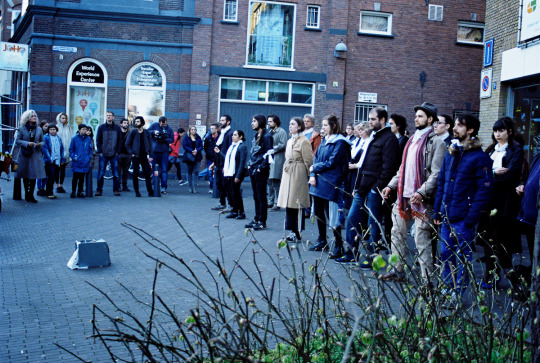
After his relaxing detour that made my inner hippie glow with joy, I stopped by The Grey Space to check out the Bertus Gerssen photo exhibition, after learning that many of the shots were taken in the infamous Villa K, a musician’s squat in the rich coastal Scheveningen district, which also happened to be my home for the evening. Instead, in front of the building, a crowd of about 40 people, carefully aligned, were standing still and looking straight ahead, wearing white scarves, while a text about guerilla warfare was blasting from the speaker, all to the confusion of both festival goers and passer-by. It was a performance orchestrated by the Das Ensemble Ohne Eigenschaften.
The highlight of the evening and personal festival discovery came from the British duo These Hidden Hands, whose deep, sleepy drones slowly built over more fleshed out beats, then burst into melody in a moment veering on the sublime.
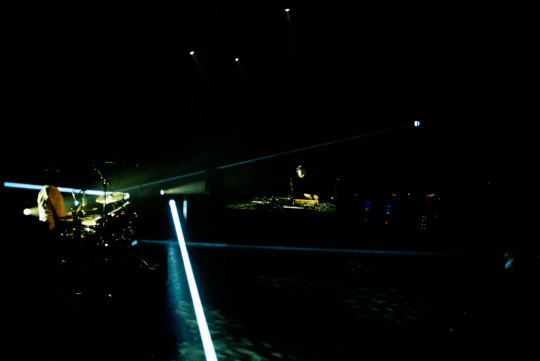
Back in Paris, a friend of mine commented that now “Jeff Mills comes to Europe to do his artsy projects”; to be honest, I’m usually skeptical of these live electronics and classical instrument collaborations, even if it’s between Jeff Mills and Tony Allen – it usually can be amazing or notoriously bad. Despite the two musicians being true masters, technical virtuosos in each of their field, this second meeting of the minds on stage was everything I feared it would be – a major let down. With the exception of perhaps 5 minutes when Jeff’s beats were erring on the more melodic side, nicely filling out the space alongside Tony’s drumming. The rest of the set was rather tinny and flat.
This result could be pinned on the limited rehearsal time due to budget issues. Then again one must argue about the catch 22 of bringing the main headliner to a festival in order to sell tickets yet not facilitate said performer to be at their best and debate the relevance of booking such potentially problematic acts in the first place.

The North Sea
The next day, with my feet in the sand, I was pondering over the intense three days. Looking back at the program, it seemed like the festival managed to touch on some major issues in contemporary society, while addressing the audience’s fears and desires on a more subconscious level. There was talk about activism and political engagement, a lingering penchant for ‘90s’ nostalgia and a proclivity for the darker sounds of the electronic spectrum, those that seem to capture the looming global tragedy, as if they had compiled a collective CT-scan that revealed our late night thoughts.
Its diverse, seemingly erratic choice of artists was actually making sense; I was very pleased with the way they addressed the burning topic of 2016 – women in electronic music. Instead of making a point out of booking female performers, they were seamlessly integrated into the lineup, offering a glimpse into a much needed new reality in which female musicians and DJs are simply referred to as musicians and DJs. As Jo Kali argued in her essay from the festival booklet, “feminism demands a radical cognitive adjustment, not just balancing numbers.”[1]
Enveloped by the calming sound of the North Sea, I could not help but think back at all the exchanges and support I received from fellow feminists during the festival, be it sharing experiences of odd sleeping arrangements with male hosts on tour, or the casual inappropriate touching by random men from the industry or simply Antye and Amy buying my broke ass a drink. Being surrounded by all these wonderful ladies was certainly a privilege.
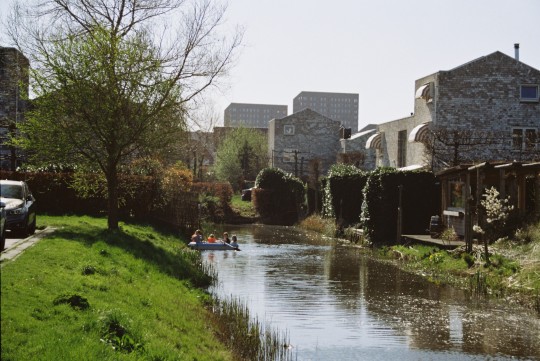
Although the festival took place the same time as the Rush Hour Weekender, which catered to my usual musical obsessions, I’m happy to have had this rather challenging festival experience.
I believe Rewire has found a tremendous formula for luring club people into the more underground realms of the electronic music spectrum. And, if nothing else, telling your friends you’re a 15 minute bike ride from the beach is always a good argument.
[1] Jo Kali, p.42 There is no “single” woman, Rewire 2017 booklet
Rewire festival took place March 29th-April 2nd 2017 in The Hague
analogue photos by the author @feralnoise
#rwr17#rewire#rewire festival#agf#kubra khademi#jessy lanza#helena hauff#aurora halal#reviews#festivals#the attic mag
0 notes
Text
0 notes
Text
0 notes
Text
Week 4: 20th Oct: Antye Greie
I related to Antye Greie's work as she brings the inseparable collaboration between art and politics into her sonic art expression.
Sound camps Sonic wild code sonic wilderness
Feminism uncovering forgotten women in sound
Improvisation piece wanted to make something rhythmic
Line of women in the rice field 2018 lovely gentle noises cricket, bell and other sounds textures and tones. Filmed this piece then performed it later live on stage. She wrote a few chapters about sonic interventions and sonic wildness.
On vimeo
“treeing”Hanoi vietnam 2019 middle of city meditating around an ancient tree
She has done 20 masterdome improvisations
Did a
Blueberry sonic experience aking recording equipment out of mushrooms and other forages
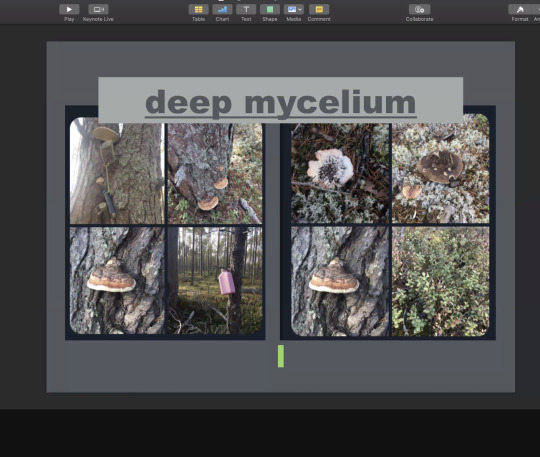

Moving away from growing frequencies apart growing
Using frequency improvisation links this to buddhism 2016 piece got people to use voice and body.
below she did a political art piece by applying female pressure and awareness and solidarity campaign for the cantons of Rojava in northern Syria
Antye Greie-Ripatti aka AGF has curated a female:pressure campaign called #Rojavato raise awareness and show solidarity to the cantons of Rojava, in northern Syria. Hoping to promote social, racial and ethnic justice, gender, religious freedom, ecological principles.
3.
Ryoko akam 2013
Went to a nuclear power plant making a spell to bewitch this place. she then moved onto introduce feminism and intersectional space and identity.

Her piece sound suspension a rerun of her walk
Methods of gathering people
Critical body�� Kubra Khdemi Afghan woman
Intersectional feminism inequality between women, passports, women and sexuality, women and class, women and LGBTI issues. women and race.
Conditions, legal rights, sonic concepts were using bodies in space, holding,
Human noise
Humming. How to collaborate or interact from a privileged position how can we help, she asked the audience hoe can we help, how do we tackle these inequalities
Microphones
Worked with contact mic she ran over their body, the mic doesn't care about gender, sex
The colour of skin. The collective humming intervention
She is working on an idea below Position, Composition and sound


Build space called recon.org to commission on this site
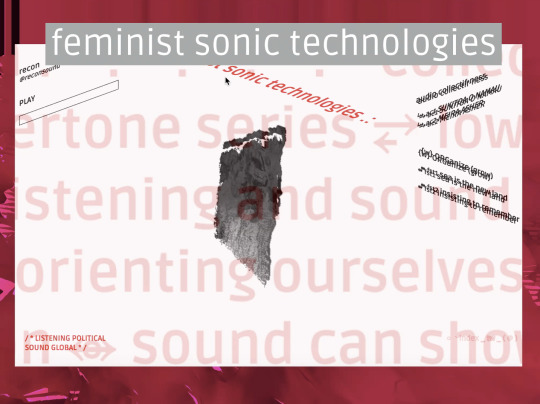
A layered embodied experience
In opposition to her and her desire to expose everything she is interested in
Female pressure eclectic indigo vienna 3000 off social media network
Campaigned for visibility, gender sex studies to try and change sound field
In terms of gender
Antye Greie interviewed Lastesis about their performance and sound.
"What began as a crowd of blindfolded women chanting in the Chilean port of Valparaiso* turned into a global movement to fight domestic and institutionalized sexual violence."
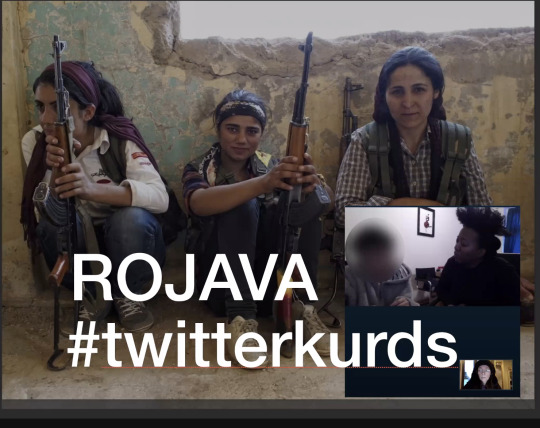
Women fighters in sierra
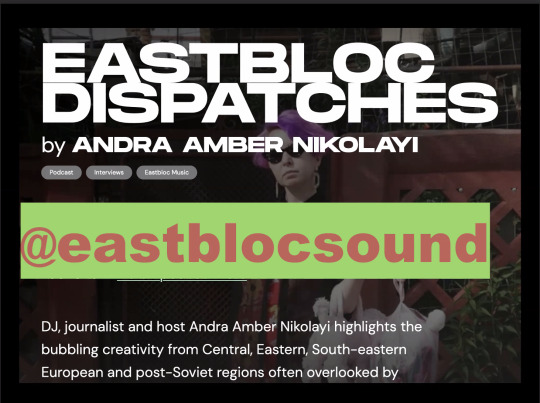


#l̊i̊s̊t̊e̊n̊ to rec-on.org archive#direct links -> quick access to all episodes#https://rec-on.org/index-sitemap.html#NEW#landbacknowledgement#https://rec-on.org/landbacknowledgment.html#↹ audeƒenze#AGF & Porya Hatami - Sanandaj#Iran#https://rec-on.org/audefenze.html#FEMINIST SONIC TECHNOLOGIES#feministsonictechnologies#https://rec-on.org/feministsonictechnologies.html#!!! strike/ huelga/ streik/ lakko!#with aylu & agf feat. Constanza Castagnet#Buenos Aires#Argentina#https://rec-on.org/STRIKE!.html#↟ BaTonga Exist#by Lindatumune Nyono Mudimba#rural Zimbabwe#https://rec-on.org/BaTongaExist.html#⟳ SOIL MAtris{x} ⥰⥰⥰#Women defend the earth#by Aly Cabral#Manila#Philippines#https://rec-on.org/soilmatrix.html#+ reader: https://rec-on.org/pdf/fst07_SoilMatrix__AlyCabral_reader.pdf#✦ JIZINGATIE MWENYEWE
0 notes
Photo

¿Cómo el lenguaje de la performance (hecho de prácticas y procedimientos) abre las posibilidades de observación del mundo, describe lo indescriptible con palabras? ¿Cómo las prácticas de arte de acción/performance pueden corporeizar conflictos, problematizar las medidas y proporciones que utilizamos para observar/describir el mundo?
Invitamos a cinco compañeras artivistas que residen en la Comunidad de Madrid, en Segovia, en París y en Argel a vincularse a los cinco ejes temáticos que el grupo UCMM2 ha concretado durante el primer semestre de reflexión: Ciudad Bailar, Familias Heterodisidentes, En Espera, Corpografías y WTF Instituciøn! Una acción cada mes. Cinco meses. Cinco lugares. O seis. Todo puede cambiar. Ciudad de Madrid 2018-2019. España, Sur de Europa. Redadas racistas, burbuja reload, turistification a tope, resistencias vecinales, creatividad subversiva y olor a pis seco. Este conjunto de acciones trata de relacionar cuerpos, grupos, comunidades, prácticas y problemas vivos. ¿Qué puede pasar en el presente continuo? Tocar y ser tocada aquí y ahora. ¿Una conversación de afectaciones? Va de trabajo colaborativo, condiciones materiales e inmateriales, metodologías, ética y autorías.
Investigar las dinámicas de una “ciudad globalizada” desde acciones concretas puede llevarnos a lugares insospechados, bellos y transformadores. Cuerpos-obstáculo para el poder económico vuelven a reunirse. Miradas molestas para el discurso dominante se cruzan, disienten, aprenden, se quieren. O no. En espera. (Re)producción de crianzas.(Re)cambio de instituciones públicas no de elites. Vivencias encarnaciones procedencias diversas. Corpografías feministas y decoloniales. Como las flores en el monte, bailemos a pecho descubierto, ante la puerta principal del parlamento cultural.
Una propuesta coordinada por Laura Corcuera junto al equipo de Una ciudad muchos mundos, programa impulsado por Intermediae, Matadero Madrid.
SEGUNDA PARTE DEL CICLO (enero-marzo 2019)
4. Eje Marea en Espera SOBRE LA ESPERA Ana Matey Fotografía: Alba Soto Sábado 19 de enero de 2019 de 18 a 20 h. en CentroCentro Cibeles Pensar en la espera… espera - expectativa, espera - dilación, espera - permanencia, espera - estancia, espera - demora, espera - retraso, espera - aplazamiento, espera - parada, espera - prórroga, espera - expectación, espera - esperanza, espera - perspectiva, espera - futuro, espera - posibilidad, espera - salida, espera - esperar, espera - aguardar, espera - permanecer, espera - quedarse, espera - aguantar, espera - perseverar, espera - resistir… en lugares de espera… de expectativa, de dilación, de permanencia, de estancia, de demora, de retraso, de aplazamiento, de parada, de prórroga, de expectación, de esperanza, de perspectiva, de futuro, de posibilidad, de salida, de esperar, de aguardar, de permanecer, de quedarse, de aguantar, de perseverar, de resistir… ¿Cuál es la espera más larga que has tenido en tu vida? ¿Qué brota dentro de ti al hacerte esta pregunta? ANA MATEY. Artista madrileña realiza una obra que transita entre el campo de las artes visuales, la performance, la acción, la danza butoh y en los últimos años explora el mundo sonoro en sus piezas, buscando a través del movimiento corporal y el objeto generar un diálogo o conversación. En los últimos años la conversación gira entorno a la relación humano-naturaleza, cuestionándose la posibilidad de una nueva simbiosis, así como otra vía de conocimiento y manera de estar en el mundo.
5. Eje Corpografías
WALK IN MADRID Kubra Khademi Fotografía: Naim Karimi
Domingo 17 de febrero de 2019, de 12-14 h. en el Rastro de Madrid.
En Lahore presenté la vida en medio de una autopista peligrosa mientras realizaba gestos de mi vida cotidiana. En Kabul mostré la cultura del acoso sexual en diferentes espacios públicos. En Girona dibujé mi propia sombra proyectada por la luz del sol en medio de la calle en busca de mi identidad desarraigada. En París llevé toda mi vida en la cabeza y caminé descalza desde el amanecer hasta el atardecer en toda la ciudad. ¿Qué busco en Madrid?
Kubra Khademi es artista de performance afgana y feminista. Estudió Bellas Artes en la Universidad de Kabul, antes de asistir a la Universidad Nacional Beaconhouse en Lahore, Pakistán por UMISAA. Después de interpretar en Kabul su pieza Armor (2015), Khademi se tuvo que exiliar. Actualmente vive y trabaja en París, Francia, y expone sus obras en todo el mundo. En 2016 recibió una beca de maestría en la Universidad Pantheon Sorbonne y el título de Chevalier de l’Ordre des Arts et Lettres por el Ministerio de Cultura francés. Desde 2017 Khademi es miembro del Atelier of Artists in Exile en París y artista residente de la Cité International des Arts del Instituto Francés.
6. Eje Arte de Acción
OPERACIÓN LEGAZPIX Colectiva Anónima FOTO: LCGG.
Domingo 10 de marzo de 2019 Plaza de Legazpi y depósito de Matadero. Hora por confirmar.
Una comunidad de cuerpos espera hacer una fiesta familiar y bailable en la glorieta de Legazpi, ciudad de Madrid, sur de Europa. Este encuentro corpológico tiene forma de performance y requiere la colaboración de las instituciones públicas. ¿Qué puede pasar? ¿Qué puede acontecer?
Blog del proyecto
1 note
·
View note
Text
No Frontiers #4 - Paris
We showed 3 episodes of SHTV in Paris for Nofrontiers2021 a group exhibit curated by Mehdi Georges Lahlou. It's the first time shtv is being shown in a country where s** work is actually illegal.
There's other fab works about pressing related socio-political topics by artists including: Clay Apenouvon, Halida Boughriet, Camille Coléon & Audrey Guimard, Arianne Foks, Beya Gille Gacha, Soukaina Joual, Kubra Khademi, Mehdi-Georges Lahlou, Kokou Ferdinand Makouvia, Randa Maroufi, Kelly Sinnapah Mary, Fatima Mazmouz, Anna Raimondo, Enrique Ramirez, Pascale Rémita, Moussa Sarr, Massinissa Selmani


0 notes
Photo

Les Envoutes : Kubra Khademi : Pouvoir et destruction. #museedartmoderne #museedartmodernedelavilledeparis #lesenvoutes #kubrakhademi #pouvoir #destruction #afghanistan #galerieericmouchet #instapic #photoofthedays #parismaville (à Musée d'Art Moderne de Paris) https://www.instagram.com/p/CVTqOfAqFIE/?utm_medium=tumblr
#museedartmoderne#museedartmodernedelavilledeparis#lesenvoutes#kubrakhademi#pouvoir#destruction#afghanistan#galerieericmouchet#instapic#photoofthedays#parismaville
0 notes